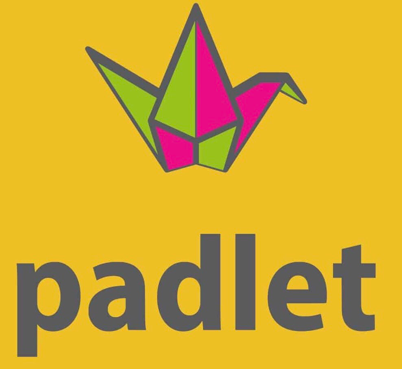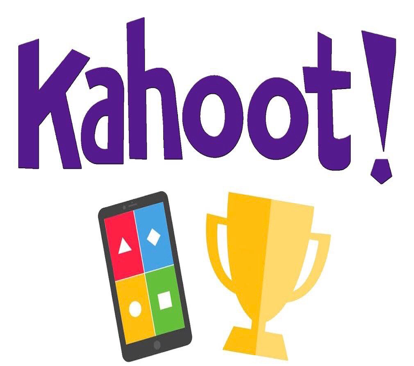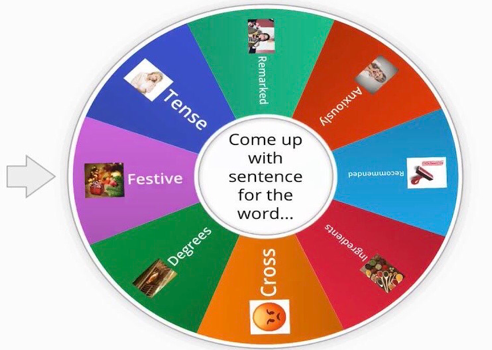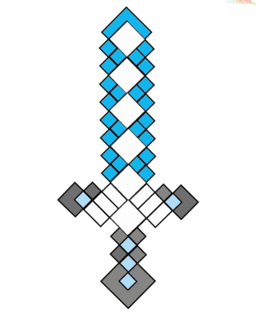Бұл материал сайт қолданушысы жариялаған. Материалдың ішінде жазылған барлық ақпаратқа жауапкершілікті жариялаған қолданушы жауап береді. Ұстаз тілегі тек ақпаратты таратуға қолдау көрсетеді. Егер материал сіздің авторлық құқығыңызды бұзған болса немесе басқа да себептермен сайттан өшіру керек деп ойласаңыз осында жазыңыз

Бонусты жинап картаңызға (kaspi Gold, Halyk bank) шығарып аласыз
1 жыл бойы тегін жүктеу мүмкіндігіне ие болыңыз!

жеңілдік
Педагогикалық оқу Ағылшын тілі: Conducting English lessons using modern methods

Conducting English lessons using modern methods
Khassainova Aidana Zulpukharovna
Kadyr Myrza Ali General secondary school
English teacher
Annotation.One of the main problems in the modern methodology of teaching a foreign language is the problem of increasing the effectiveness of teaching. The intensity of teaching a foreign language involves the use of modern forms and means of teaching, the use of new methods of cognition in teaching: the use of computers, audio, video and electronic computing equipment.
The requirements for the modern educational process significantly exceed the tasks of simple transfer of knowledge from the teacher to students. In the conditions of today's information age, the teacher must rebuild from the habitual transfer of ready-made knowledge to teaching students the methods of their independent production, ways to obtain, understand and apply new information necessary for their further development. So, the goals of modern education established in the federal state education system are based on the principle of "teaching not science, but reading
Keywords: modern methods and techniques, visual aids, innovative technologies, game technology.
The main purpose of teaching foreign languages is the formation and development of the communicative culture of schoolchildren, teaching practical mastery of a foreign language. The task of the teacher is to create conditions for practical language acquisition for each student, to choose such teaching methods that would allow each student to show their activity, their creativity.[4]
Modern pedagogical technologies help to implement a personality-oriented approach to learning, provide individualization and differentiation of learning, taking into account the abilities of children, their level of learning.
Therefore, I use a variety of pedagogical technologies in my teaching activities.
The use of new information technologies in education is one of the most relevant topics today. Knowledge of new information technologies allows you to make the lesson interesting, visual and informative. Their use significantly enriches the lesson, making it more attractive to students, and increases its effectiveness.[2]
In my practice, I actively use ICT at various stages of the lesson, depending on the goals and objectives set, i.e. at the stages of familiarization, consolidation, repetition of new lexical or grammatical material, work on listening, reading, writing and speaking, as well as at the stage of monitoring students' knowledge on the topic.
Based on personal experience of using information technology in English lessons, the following conclusions were drawn about the advantages of this type of technology:
-
ICT increase the motivation of students to study the subject;
-
develop the creative abilities of students, their independence;
-
develop and deepen interdisciplinary ties;
-
contribute to the self-realization of the student's personality;
-
improve the quality of knowledge on the subject.
This form of work creates favorable conditions for the development of students as an independent, creative person. To create a presentation paper, students need to find the right material using various information sources, including the Internet. This type of work also teaches students the ability to correctly select material and navigate the flow of information. Creating a project in the form of a presentation gives you the opportunity to choose and explore the chosen topic, to show and develop creativity and independence at the same time. It should be noted that students are very interested in creating presentation design works.[6]
It should also be noted that the level of preparation of design works using new information technologies is constantly growing. Another positive aspect of using ICT: preparing a presentation encourages students to use their knowledge of the subject "Computer Science and ICT", develop computer skills and actively use Internet resources.
Innovative educational resources:
-
L

earningApps.org the interactive task builder is designed to support the learning process through interactive modules (exercises). At the same time, both the teacher and the student can create interactive modules using ready-made templates. The main idea of interactive tasks created thanks to this service is that students can test and consolidate their knowledge in a playful way, which contributes to the formation of cognitive interest in a particular academic subject. -
P

adlet board is a free platform for creating an online Board. Such a board is effective for use even in a deeper study of the topic, in the form of distance learning. At the same time, students have the opportunity to use the electronic board for the common collection of assigned independent tasks, that is, materials on the topic, all resources are collected in one place and are not lost. -
K

ahoot.Entertain students with distance learning opportunities, play in the classroom and immerse yourself in game challenges to evaluate your learning. Make your own Kahuts! or choose from over 40 million existing games. Check out our favorite ways to use Kahoot for teachers!
I often use the WordWall platform in English lessons.
-
WordWall this service allows you to automatically divide students into groups and pairs during the organization of training. It is also effective to use worldwall in creating a new platform, interactive tasks that serve as lesson visualization.

And in distance learning, I use the Zoom platform.
-
Zoom.Unlike other training platforms with accessible users, Zoom is a video conferencing platform. It offers many features such as screen sharing, break rooms, chat and recording functions that can be used as good virtual classrooms for tutors and teachers.
Visual teaching methods are those in which the assimilation of educational material is significantly dependent on the visual aids and technical means used in the learning process. Visual methods are used in conjunction with verbal and practical teaching methods and are intended for visually and sensually familiarizing students with phenomena, processes, objects in their natural form or in a symbolic image using all kinds of drawings, reproductions, diagrams, etc. In modern schools, screen technology is widely used for this purpose.
Visual teaching methods can be conditionally divided into two large groups: the method of illustrations and the method of demonstrations.
The illustration method involves showing students illustrative manuals, posters, tables, paintings, maps, sketches on a blackboard, flat models, etc.
The demonstration method is usually associated with the demonstration of devices, experiments, technical installations, films, filmstrips, etc.
This division of visual aids into illustrative and demonstrative ones is conditional. It does not exclude the possibility of attributing individual visual aids to both the illustrative and demonstration groups. (For example, showing illustrations through an epidiascope or a codoscope.) The introduction of new technical means into the educational process (television, video recorders) expands the possibilities of visual teaching methods.
The method of visual aids.
-
The "SMS to a friend" method.
Traditionally, the academic year begins with the repetition of the studied material. This is a rather boring process, so repeating grammatical topics that children have almost forgotten during the summer holidays should be made as interesting and productive as possible. [4]
I suggest that students write a letter to an imaginary foreign friend, in which we tell about ourselves, and we compose the text of the letter together. The difficulty level depends on the age of the guys. In the process of work, we understand that it is not enough just to find the right words, but it is necessary to express our thoughts competently. [5]
First, the students compiled the text in Kazakh, and then translated it into English. Thus, they independently carry out the work of translating into English. Vocabulary can develop and work with errors.
-
The “Minecraft” method
There are 5 tasks in the set. In each task, you need to assemble an item or a character from Minecraft from blocks. You need to cut out the blocks and glue them into a template. At the same time, we read the words on each block.


Each template contains words
to practice one of the 5 short vowels. It's fun to do
it.[2]
One of the effective ways of educating students' interest in the subject is the organization of their play activities. Games complement traditional forms of learning and contribute to the activation of the learning process. In combination with other methods and techniques, games increase the effectiveness of teaching, make the learning process more interesting, contribute to the successful assimilation of the studied material, and form teamwork skills. Therefore, gaming technologies occupy an important place in the lesson, and I pay special attention to them in elementary school. I believe that all modern pedagogical technologies used in educational activities in English lessons contribute to the activation of cognitive activity of students, help to implement a personality-oriented approach to learning, provide individualization and differentiation of learning taking into account the abilities of children, their level of learning.[1]
I use several types of games in English lessons. They are:
-
«What is missing»
Purpose:a game for memorizing lexical units.
Pictures of toys hang on the board. The first children look at all the given pictures, then turn around and close their eyes. The teacher removes a picture of one toy. Children need to name the name of the Lost Toy.
-
«Collect the pictures»
Purpose: development of thinking skills and manual matriculation.
Children are given cut out details of drawings on the theme" Toys". Children need to assemble the parts and name their English names.
-
«Magic box»
Purpose: development of imagination, thinking, tactile sensations
A magic box is placed in front of the children, inside which the objects assigned to the subject are placed. The children stand in a circle and say, " What's this?"asks the question, and the child who puts his hand inside the box, determines what it is, answers with the phrase" this is is".
-
«Give me…»
Purpose: to put into practice the phrase" Give me me".
Types of toys stand in front of children. Each child is told the English name of one toy with the phrase "Give me me", the same child named Sykes must take the toy and give it. For example: Give me a bear. (hare, dog, frog, car, star, doll, ball.) The same child leads the game further.
-
«My future profession is...»
Purpose: to increase vocabulary.
The children were given the board " My future profession is..."the reference – pictures of the phrase are given. Each child first tells in his native language who he will be in the future, and then pronounces sentences in English using reference pictures on the board.
-
«Basket with fruits and vegetables»
Purpose: to learn how to distinguish fruits from vegetables.
The children are divided into two groups the first group must collect the fruits by picking them in a Sykes basket. And the second group ripens vegetables. A short melody is added, after which each group checks themselves, calling the English names of the fruits they collect.
-
«Clap or shake»
Purpose: development of phonemic abilities and rapid thinking.
They call the names of animals to children. If the House hears the name of the animal, it claps its hands, and if the steppe hears the name of the animal, it shakes its head.
Games that my students often and love to play: an Interesting aquarium and a Dodecahedron.
-
Interesting aquarium
Purpose: to improve the thinking of students.
The teacher fills a bottle with water and writes questions related to the topic on papers or new words. The same papers are placed in a bottle full of water. The student shakes the bottle and answers the questions on the paper.
-
«Dodecahedron»
A method based on working with images and which contributes to the development of logical and imaginative thinking. A dodecahedron is a field of 9 rectangles, each of which is filled with pictures. The task is to explain the Dodecahedron by composing a story based on interconnected images. This is a universal way, it can be used to work with text (retell the text according to reference pictures, etc.), when studying a regional topic, as a support for a monologue on a given topic, etc. To complete the task, you can offer a Dodecahedron, which was compiled by the teacher himself, and also, as a creative task, invite the children to compose their own The dodecahedron.
In conclusion: "believe in the wrist - they didn't give it to anyone.In the era of faith in knowledge, let's not stay informed," Abylai Khan said, noting that the future of tomorrow is brighter than today, and that the almighty force that moves human society forward is inherent only in knowledge.The use of innovative technologies in the classroom is the only way to create favorable conditions for its effectiveness, and this, in turn, promotes teamwork and human relations. The application of an innovative approach to learning is a great achievement of practice-oriented learning, as well as its quality ensures that the great demand for acquired knowledge is met in improving the quality of life, as well as achieving goals in specific conditions. The activation and development of students' creative abilities during classes is of great importance. The development of new technologies has a beneficial effect on the formation of intellectual, professional, moral, spiritual, civic and other human abilities of a teacher.Self-development and training help to effectively organize the educational process. It is impossible to become a competent, versatile specialist without mastering educational learning technologies in the modern field of education. After all, high-quality English language teaching is a requirement of global time.
List of used literature
-
E.S. Polat, M.Y. Bukharkina "Modern pedagogical and information technologies in the education system": Textbook. - M.: Academy, 2007.
-
Asimov E.G., Shchukin A.N. "New dictionary of methodological terms and concepts", M.: Ikar, 2009.
-
Solovova E.N. "Methods of teaching foreign languages: a basic course of lectures: a manual for students of pedagogical universities and teachers", 4th edition, Moscow: Prosveshchenie, 2006.
-
Titarenko N.V. "Methods of organizing problem-oriented role-playing games in distance learning of foreign languages: based on the material of the English language", Moscow: Moscow State University, 2007
-
Galskova N.D. "Modern methods of teaching foreign languages: A teacher's manual. - 2nd ed., reprint. and additional - M.: ARKTI, 2003.
-
Yu. Vaulina, O. Podolyako UMK "English in focus", grades 5-9, M.: Enlightenment, 2017. 2















